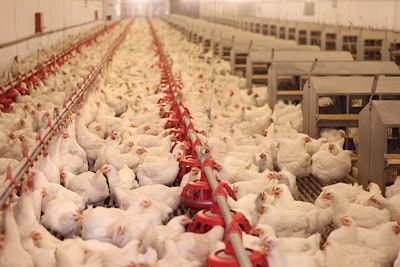
The question is increasingly important as more and more egg producers adopt cage-free systems and was examined by Dr. Dawn Koltes, Assistant Professor in the Department of Animal Science at Iowa State University at the recent Egg Industry Issues Forum.
She recounted the findings of studies carried out on an Iowa egg farm that had both conventionally reared hens and cage-fee birds in the same house.
Importantly, she noted, there was no difference in intestinal permeability between layers raised in cages and those reared cage-free. However, there were differences in intestinal morphology and bacterial communities.
Comparing villus height and crypt depth in birds kept in the two systems, no differences were found in the ileum, yet there were increases for both villus height and crypt depth in the jejunum of cage free birds.
However, the ratio between villus height and crypt depth was found to be more favorable in both the ileum and the jejunum of conventionally reared birds, meaning that this group may have more favorable gut health, although more studies would be needed to fully understand absorptive capacity.
She also noted that in cage-free birds there was a greater abundance for 16 bacterial species, while in caged birds there were 46 bacterial species that were more abundant. This greater abundance in conventional birds, perhaps indicates that their microbiomes are more flexible and better able to deal with stress.
Microbiome
She also highlighted the difference in percentage of certain bacteria present in the gut of both types of layers.
Clostridium colinum and Gallibacterium anatis, which are associated with enteric disease, were higher in cage-free birds. However, Candidatus arthromitus and Lactobacillus acidophilius, both considered beneficial, were also higher in this group.
Additionally, Lactobacillus kitosatinis, which has been associated with some enteric diseases, was also higher in cage-free layers. While this bacterium may have be associated with disease, more recently it has been identified as a competitive inhibitor of Salmonella enteriditis and S. typhimurium. It remains unclear whether is presence is beneficial, but it could be useful in preventing Salmonella colonization.


















